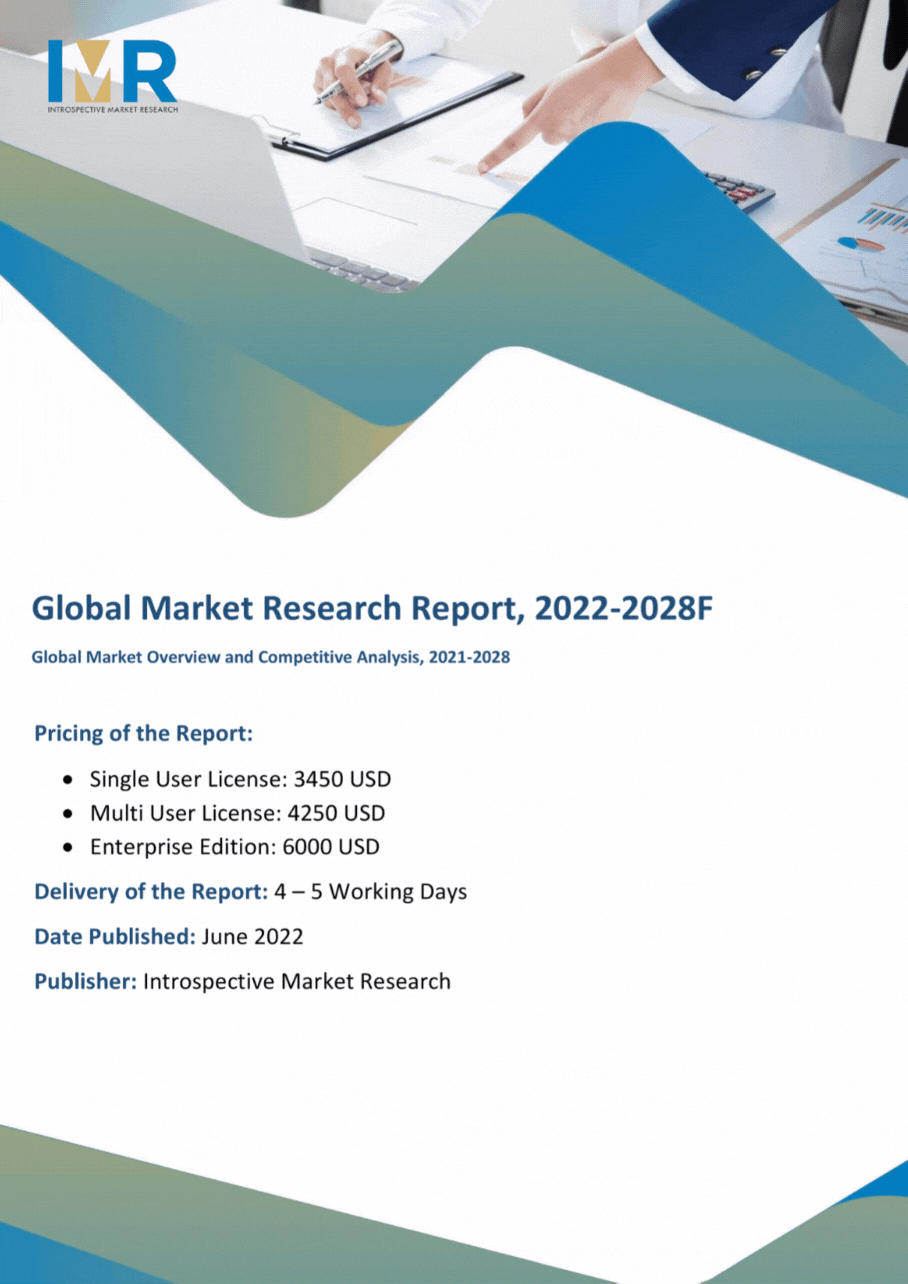Infrastructure as a Service Market Synopsis
Infrastructure as a Service Market Size Was Valued at USD 130.08 billion in 2023 and is Projected to Reach USD 738.11 billion by 2032, Growing at a CAGR of 21.4% From 2024-2032.
Infrastructure as a Service (IaaS) is a cloud computing model that allows users to access and manage virtualized computing resources over the internet, eliminating the need for physical hardware ownership and maintenance. It enables businesses to reduce capital expenses, increase agility, and deploy applications and services quickly, fostering innovation and flexibility in IT operations.
- Infrastructure as a Service (IaaS) is gaining popularity due to its ability to scale computing resources dynamically, reducing costs and allowing businesses to focus on core business activities. IaaS providers manage hardware, software, and networking components, freeing up resources for core business activities. It also offers flexibility and agility, enabling rapid deployment and iteration of applications and services, accelerating time-to-market, and fostering innovation.
- Market trends show a growing demand for IaaS as businesses transition to cloud-based infrastructure solutions, driven by digital transformation initiatives, remote work requirements, and data-driven decision-making. Advancements in technologies like AI, IoT, and edge computing fuel this demand for scalable and flexible infrastructure.
- As businesses continue to adopt cloud computing, IaaS demand is expected to remain robust. Industries like retail, finance, healthcare, and manufacturing are leveraging IaaS to modernize IT infrastructure, enhance operational efficiency, and gain competitive advantages. The COVID-19 pandemic has accelerated the adoption of cloud services, with remote work becoming the norm and businesses seeking resilient and scalable infrastructure solutions to support distributed workforces.
- The demand for Infrastructure as a Service (IaaS) is driven by the increasing complexity of IT infrastructure requirements, such as high availability, disaster recovery, and regulatory compliance. IaaS providers offer robust security measures, data encryption, and compliance certifications, providing peace of mind to businesses. IaaS also enables organizations to leverage advanced technologies like machine learning and big data analytics, enabling them to innovate, adapt, and thrive in the digital age.

Infrastructure as a Service Market Trend Analysis
Rising demand for cheaper IT infrastructure
- The increasing demand for cheaper IT infrastructure is driving the adoption of Infrastructure as a Service (IaaS). Traditional IT infrastructure requires substantial upfront capital investments, which poses financial challenges for businesses, especially small and medium-sized enterprises (SMBs) with limited budgets or startups. IaaS offers a cost-effective alternative by shifting the financial burden from capital expenses to operational expenses (OpEx).
- Businesses can access a wide range of computing resources, including virtual machines, storage, and networking, on a pay-as-you-go basis. This consumption-based pricing model allows organizations to scale resources up or down based on demand, eliminating the need for overprovisioning and reducing the wastage of unused capacity.
- IaaS providers benefit from economies of scale, leveraging their massive infrastructure investments to offer services at lower costs than individual businesses could achieve on-premises. The affordability of IaaS infrastructure also democratizes access to advanced technology capabilities, allowing small businesses and startups to leverage cutting-edge technologies without the prohibitive costs of building and maintaining dedicated infrastructure.
Integration of AI and big data
- The integration of Artificial Intelligence (AI) and Big Data offers Infrastructure as a Service (IaaS) providers with a significant opportunity to offer innovative solutions to their customers. AI relies on vast amounts of data for training models and making informed decisions, while Big Data technologies provide the infrastructure and tools needed to store, process, and analyze large datasets. Combining AI and Big Data capabilities, providers can deliver powerful solutions that enable businesses to harness the full potential of their data.
- Opportunity lies in AI-driven analytics and insights, where IaaS providers can offer advanced analytics tools and platforms that leverage AI algorithms to quickly analyze massive datasets and extract valuable insights. This can help businesses make data-driven decisions, optimize operations, and identify growth opportunities.
- AI-powered automation can improve operational efficiency and free up IT resources for strategic initiatives. AI-driven threat detection and response systems can analyze vast amounts of data in real time, while AI-driven personalization and recommendation engines can enhance the user experience for IaaS customers.
Infrastructure as a Service Market Segment Analysis:
Infrastructure as a Service Market Segmented on the basis of Deployment Type, Service, and End User.
By Deployment Type, Hybrid Cloud segment is expected to dominate the market during the forecast period
- The Hybrid Cloud segment is expected to dominate the Infrastructure as a Service (IaaS) market due to its ability to combine the flexibility and scalability of the public cloud with the control and security of the private cloud. This is driven by the diverse needs of businesses, which require different workloads for different purposes. Hybrid Cloud solutions optimize performance, cost, and security by deploying workloads where they best fit. Hybrid Cloud architectures enable seamless integration of on-premises infrastructure with cloud environments, allowing businesses to leverage their investments in infrastructure, applications, and skills while gaining the benefits of cloud scalability and innovation.
- Hybrid Cloud solutions also allow businesses to maintain sensitive data on-premises or in private cloud environments while still benefiting from public cloud scalability for less sensitive workloads. Additionally, Hybrid Cloud architectures support a multi-cloud strategy, allowing businesses to leverage multiple cloud providers and services to avoid vendor lock-in, optimize costs, and enhance resilience.
- The Hybrid Cloud segment is gaining prominence due to the complexity of modern IT environments and the adoption of emerging technologies like edge computing and IoT. These solutions offer flexibility in managing workloads across distributed environments, including data centers, edge locations, and public cloud regions. This is crucial for businesses utilizing edge computing for low-latency applications or IoT deployments while benefiting from centralized management and scalability. This segment is expected to drive innovation and growth in the IaaS market.
By Service, Compute Services segment is expected to dominate the market during the forecast period
- The Compute Services segment is expected to dominate Infrastructure as a Service (IaaS) due to its central role in cloud computing and its significance to businesses' infrastructure needs. Compute services form the foundation of cloud infrastructure, providing the processing power needed to run applications, handle workloads, and perform calculations. The demand for computing resources is consistently high across various industries, including hosting websites, web applications, data analytics, and machine learning algorithms.
- The scalability and flexibility of compute services make them attractive to businesses, allowing them to quickly provision and scale resources based on demand, efficiently managing fluctuating workloads and accommodating spikes in usage without significant upfront investments in hardware infrastructure. Additionally, computing services enable businesses to embrace emerging technologies and innovation, allowing them to experiment with new technologies, develop innovative applications, and iterate on solutions without the constraints of traditional on-premises infrastructure.
- Cost-effective solutions for businesses, especially when compared to the expenses associated with maintaining and upgrading on-premises hardware, are also offered by computing services, with pay-as-you-go pricing models helping optimize costs and allocate resources more efficiently.
Infrastructure as a Service Market Regional Insights:
Asia Pacific is Expected to Dominate the Market Over the Forecast period
- The Asia Pacific (APAC) region is poised to lead the Infrastructure as a Service (IaaS) market for several compelling reasons. APAC encompasses some of the world's most rapidly expanding economies, including China, India, and various Southeast Asian nations, thereby generating substantial demand for cloud computing services. This demand stems from the ongoing digital transformation efforts across diverse industries, necessitating the scalable and flexible infrastructure solutions provided by IaaS providers.
- APAC boasts a sizable and increasingly interconnected population, characterized by significant rates of mobile and internet connectivity. This widespread connectivity fosters a fertile environment for the adoption of cloud services, as both businesses and consumers seek access to dependable and scalable computing resources. Additionally, the region's flourishing startup ecosystem contributes to the demand for cloud services, supporting the growth and innovation of emerging enterprises.
- Government initiatives throughout APAC nations actively encourage cloud adoption and digital transformation, further propelling the expansion of the IaaS market. Collectively, these factors position the Asia Pacific region as a pivotal force driving the global dominance and growth of the IaaS market.
Infrastructure as a Service Market Top Key Players:
- Amazon Web Services (AWS) (US)
- Microsoft Azure (US)
- Google Cloud Platform (GCP) (US)
- IBM Cloud (US)
- Oracle Cloud Infrastructure (OCI) (US)
- VMware Cloud (US)
- DigitalOcean (US)
- Rackspace Technology (US)
- Cisco Systems (Cisco Cloud) (US)
- Hewlett Packard Enterprise (HPE) GreenLake (US)
- Dell Technologies (Dell EMC Cloud) (US)
- Red Hat OpenShift (US)
- Salesforce Infrastructure as a Service (Salesforce IaaS) (US)
- CenturyLink Cloud (US)
- Equinix (Equinix Metal) (US)
- Joyent Triton (US)
- Linode (US)
- Cloudflare (US)
- Joyent (US)
- SAP Cloud Platform (Germany)
- Scaleway (France)
- OVHcloud (France)
- Alibaba Cloud (China)
- Tencent Cloud (China)
- NTT Communications (NTT Cloud) (Japan), and Other Major Players.
Key Industry Developments in the Infrastructure as a Service Market:
- In June 2024, Amazon Web Services (AWS) announced that it will launch a new infrastructure region in Taiwan by early 2025 to meet high cloud service demand in the Asia-Pacific region. AWS will invest billions of dollars in Taiwan, Singapore, Malaysia, and Thailand over the next 15 years to expand its cloud infrastructure services.
- In June 2024, Atos launched Virtual Infrastructure Proficiency (VIP) Advisory services, a new technology consulting offering to help companies assess their current virtual infrastructure and define a roadmap for the future. The service helps clients optimize virtual infrastructure costs, enhance security, embrace new technology trends, and advance sustainability goals.
|
Global Infrastructure as a Service Market |
|||
|
Base Year: |
2023 |
Forecast Period: |
2024-2032 |
|
Historical Data: |
2017 to 2023 |
Market Size in 2023: |
USD 130.08 Bn. |
|
Forecast Period 2024-32 CAGR: |
21.04 % |
Market Size in 2032: |
USD 738.11 Bn. |
|
Segments Covered: |
By Deployment Type |
|
|
|
By Service |
|
||
|
By End User |
|
||
|
By Region |
|
||
|
Key Market Drivers: |
|
||
|
Key Market Restraints: |
|
||
|
Key Opportunities: |
|
||
|
Companies Covered in the Report: |
|
||
- INTRODUCTION
- RESEARCH OBJECTIVES
- RESEARCH METHODOLOGY
- RESEARCH PROCESS
- SCOPE AND COVERAGE
- Market Definition
- Key Questions Answered
- MARKET SEGMENTATION
- EXECUTIVE SUMMARY
- MARKET OVERVIEW
- GROWTH OPPORTUNITIES BY SEGMENT
- MARKET LANDSCAPE
- PORTER’S FIVE FORCES ANALYSIS
- Bargaining Power Of Supplier
- Threat Of New Entrants
- Threat Of Substitutes
- Competitive Rivalry
- Bargaining Power Among Buyers
- INDUSTRY VALUE CHAIN ANALYSIS
- MARKET DYNAMICS
- Drivers
- Restraints
- Opportunities
- Challenges
- MARKET TREND ANALYSIS
- REGULATORY LANDSCAPE
- PESTLE ANALYSIS
- PRICE TREND ANALYSIS
- PATENT ANALYSIS
- TECHNOLOGY EVALUATION
- MARKET IMPACT OF THE RUSSIA-UKRAINE WAR
- Geopolitical Market Disruptions
- Supply Chain Disruptions
- Instability in Emerging Markets
- ECOSYSTEM
- PORTER’S FIVE FORCES ANALYSIS
- INFRASTRUCTURE AS A SERVICE MARKET BY DEPLOYMENT TYPE (2017-2032)
- INFRASTRUCTURE AS A SERVICE MARKET SNAPSHOT AND GROWTH ENGINE
- MARKET OVERVIEW
- PUBLIC CLOUD
- Introduction and Market Overview
- Historic and Forecasted Market Size in Value (2017 – 2032F)
- Historic and Forecasted Market Size in Volume (2017 – 2032F)
- Key Market Trends, Growth Factors And Opportunities
- Geographic Segmentation Analysis
- PRIVATE CLOUD
- HYBRID CLOUD
- INFRASTRUCTURE AS A SERVICE MARKET BY SERVICE (2017-2032)
- INFRASTRUCTURE AS A SERVICE MARKET SNAPSHOT AND GROWTH ENGINE
- MARKET OVERVIEW
- COMPUTE SERVICES
- Introduction And Market Overview
- Historic And Forecasted Market Size in Value (2017 – 2032F)
- Historic And Forecasted Market Size in Volume (2017 – 2032F)
- Key Market Trends, Growth Factors And Opportunities
- Geographic Segmentation Analysis
- DISASTER RECOVERY AS A SERVICE (DRAAS)
- COMMUNICATION AS A SERVICE (CAAS)
- DATABASE AS A SERVICE (DBAAS)
- STORAGE AS A SERVICE (SAAS)
- INFRASTRUCTURE AS A SERVICE MARKET BY END USER (2017-2032)
- INFRASTRUCTURE AS A SERVICE MARKET SNAPSHOT AND GROWTH ENGINE
- MARKET OVERVIEW
- SMALL AND MEDIUM-SIZED BUSINESSES (SMBS)
- Introduction And Market Overview
- Historic And Forecasted Market Size in Value (2017 – 2032F)
- Historic And Forecasted Market Size in Volume (2017 – 2032F)
- Key Market Trends, Growth Factors And Opportunities
- Geographic Segmentation Analysis
- ENTERPRISES
- IT & TELECOM
- HEALTHCARE
- COMPANY PROFILES AND COMPETITIVE ANALYSIS
- COMPETITIVE LANDSCAPE
- Competitive Positioning
- Infrastructure as a Service Market Share By Manufacturer (2022)
- Industry BCG Matrix
- Heat Map Analysis
- Mergers & Acquisitions
- AMAZON WEB SERVICES (AWS) (US)
- Company Overview
- Key Executives
- Company Snapshot
- Role of the Company in the Market
- Sustainability and Social Responsibility
- Operating Business Segments
- Product Portfolio
- Business Performance (Production Volume, Sales Volume, Sales Margin, Production Capacity, Capacity Utilization Rate)
- Key Strategic Moves And Recent Developments
- SWOT Analysis
- MICROSOFT AZURE (US)
- GOOGLE CLOUD PLATFORM (GCP) (US)
- IBM CLOUD (US)
- ORACLE CLOUD INFRASTRUCTURE (OCI) (US)
- VMWARE CLOUD (US)
- DIGITALOCEAN (US)
- RACKSPACE TECHNOLOGY (US)
- CISCO SYSTEMS (CISCO CLOUD) (US)
- HEWLETT PACKARD ENTERPRISE (HPE) GREENLAKE (US)
- DELL TECHNOLOGIES (DELL EMC CLOUD) (US)
- RED HAT OPENSHIFT (US)
- SALESFORCE INFRASTRUCTURE AS A SERVICE (SALESFORCE IAAS) (US)
- CENTURYLINK CLOUD (US)
- EQUINIX (EQUINIX METAL) (US)
- JOYENT TRITON (US)
- LINODE (US)
- CLOUDFLARE (US)
- JOYENT (US)
- SAP CLOUD PLATFORM (GERMANY)
- SCALEWAY (FRANCE)
- OVHCLOUD (FRANCE)
- ALIBABA CLOUD (CHINA)
- TENCENT CLOUD (CHINA)
- NTT COMMUNICATIONS (NTT CLOUD) (JAPAN)
- COMPETITIVE LANDSCAPE
- GLOBAL INFRASTRUCTURE AS A SERVICE MARKET BY REGION
- OVERVIEW
- NORTH AMERICA
- Key Market Trends, Growth Factors And Opportunities
- Key Manufacturers
- Historic And Forecasted Market Size By Deployment Type
- Historic And Forecasted Market Size By Service
- Historic And Forecasted Market Size By End User
- Historic And Forecasted Market Size By Country
- USA
- Canada
- Mexico
- EASTERN EUROPE
- Key Market Trends, Growth Factors And Opportunities
- Key Manufacturers
- Historic And Forecasted Market Size By Segments
- Historic And Forecasted Market Size By Country
- Russia
- Bulgaria
- The Czech Republic
- Hungary
- Poland
- Romania
- Rest Of Eastern Europe
- WESTERN EUROPE
- Key Market Trends, Growth Factors And Opportunities
- Key Manufacturers
- Historic And Forecasted Market Size By Segments
- Historic And Forecasted Market Size By Country
- Germany
- United Kingdom
- France
- The Netherlands
- Italy
- Spain
- Rest Of Western Europe
- ASIA PACIFIC
- Key Market Trends, Growth Factors And Opportunities
- Key Manufacturers
- Historic And Forecasted Market Size By Segments
- Historic And Forecasted Market Size By Country
- China
- India
- Japan
- South Korea
- Malaysia
- Thailand
- Vietnam
- The Philippines
- Australia
- New-Zealand
- Rest Of APAC
- MIDDLE EAST & AFRICA
- Key Market Trends, Growth Factors And Opportunities
- Key Manufacturers
- Historic And Forecasted Market Size By Segments
- Historic And Forecasted Market Size By Country
- Turkey
- Bahrain
- Kuwait
- Saudi Arabia
- Qatar
- UAE
- Israel
- South Africa
- SOUTH AMERICA
- Key Market Trends, Growth Factors And Opportunities
- Key Manufacturers
- Historic And Forecasted Market Size By Segments
- Historic And Forecasted Market Size By Country
- Brazil
- Argentina
- Rest of South America
- INVESTMENT ANALYSIS
- ANALYST VIEWPOINT AND CONCLUSION
- Recommendations and Concluding Analysis
- Potential Market Strategies
|
Global Infrastructure as a Service Market |
|||
|
Base Year: |
2023 |
Forecast Period: |
2024-2032 |
|
Historical Data: |
2017 to 2023 |
Market Size in 2023: |
USD 130.08 Bn. |
|
Forecast Period 2024-32 CAGR: |
21.04 % |
Market Size in 2032: |
USD 738.11 Bn. |
|
Segments Covered: |
By Deployment Type |
|
|
|
By Service |
|
||
|
By End User |
|
||
|
By Region |
|
||
|
Key Market Drivers: |
|
||
|
Key Market Restraints: |
|
||
|
Key Opportunities: |
|
||
|
Companies Covered in the Report: |
|
||
LIST OF TABLES
TABLE 001. EXECUTIVE SUMMARY
TABLE 002. INFRASTRUCTURE AS A SERVICE MARKET BARGAINING POWER OF SUPPLIERS
TABLE 003. INFRASTRUCTURE AS A SERVICE MARKET BARGAINING POWER OF CUSTOMERS
TABLE 004. INFRASTRUCTURE AS A SERVICE MARKET COMPETITIVE RIVALRY
TABLE 005. INFRASTRUCTURE AS A SERVICE MARKET THREAT OF NEW ENTRANTS
TABLE 006. INFRASTRUCTURE AS A SERVICE MARKET THREAT OF SUBSTITUTES
TABLE 007. INFRASTRUCTURE AS A SERVICE MARKET BY DEPLOYMENT
TABLE 008. PUBLIC CLOUD MARKET OVERVIEW (2016-2028)
TABLE 009. PRIVATE CLOUD MARKET OVERVIEW (2016-2028)
TABLE 010. HYBRID CLOUD MARKET OVERVIEW (2016-2028)
TABLE 011. INFRASTRUCTURE AS A SERVICE MARKET BY APPLICATIONS
TABLE 012. TEST & DEVELOPMENT MARKET OVERVIEW (2016-2028)
TABLE 013. BACKUP & RECOVERY MARKET OVERVIEW (2016-2028)
TABLE 014. BIG DATA ANALYSIS MARKET OVERVIEW (2016-2028)
TABLE 015. NETWORK MANAGEMENT MARKET OVERVIEW (2016-2028)
TABLE 016. OTHERS MARKET OVERVIEW (2016-2028)
TABLE 017. INFRASTRUCTURE AS A SERVICE MARKET BY END-USE INDUSTRY
TABLE 018. BFSI MARKET OVERVIEW (2016-2028)
TABLE 019. RETAIL MARKET OVERVIEW (2016-2028)
TABLE 020. GOVERNMENT MARKET OVERVIEW (2016-2028)
TABLE 021. IT & TELECOM MARKET OVERVIEW (2016-2028)
TABLE 022. MANUFACTURING MARKET OVERVIEW (2016-2028)
TABLE 023. OTHERS MARKET OVERVIEW (2016-2028)
TABLE 024. NORTH AMERICA INFRASTRUCTURE AS A SERVICE MARKET, BY DEPLOYMENT (2016-2028)
TABLE 025. NORTH AMERICA INFRASTRUCTURE AS A SERVICE MARKET, BY APPLICATIONS (2016-2028)
TABLE 026. NORTH AMERICA INFRASTRUCTURE AS A SERVICE MARKET, BY END-USE INDUSTRY (2016-2028)
TABLE 027. N INFRASTRUCTURE AS A SERVICE MARKET, BY COUNTRY (2016-2028)
TABLE 028. EUROPE INFRASTRUCTURE AS A SERVICE MARKET, BY DEPLOYMENT (2016-2028)
TABLE 029. EUROPE INFRASTRUCTURE AS A SERVICE MARKET, BY APPLICATIONS (2016-2028)
TABLE 030. EUROPE INFRASTRUCTURE AS A SERVICE MARKET, BY END-USE INDUSTRY (2016-2028)
TABLE 031. INFRASTRUCTURE AS A SERVICE MARKET, BY COUNTRY (2016-2028)
TABLE 032. ASIA PACIFIC INFRASTRUCTURE AS A SERVICE MARKET, BY DEPLOYMENT (2016-2028)
TABLE 033. ASIA PACIFIC INFRASTRUCTURE AS A SERVICE MARKET, BY APPLICATIONS (2016-2028)
TABLE 034. ASIA PACIFIC INFRASTRUCTURE AS A SERVICE MARKET, BY END-USE INDUSTRY (2016-2028)
TABLE 035. INFRASTRUCTURE AS A SERVICE MARKET, BY COUNTRY (2016-2028)
TABLE 036. MIDDLE EAST & AFRICA INFRASTRUCTURE AS A SERVICE MARKET, BY DEPLOYMENT (2016-2028)
TABLE 037. MIDDLE EAST & AFRICA INFRASTRUCTURE AS A SERVICE MARKET, BY APPLICATIONS (2016-2028)
TABLE 038. MIDDLE EAST & AFRICA INFRASTRUCTURE AS A SERVICE MARKET, BY END-USE INDUSTRY (2016-2028)
TABLE 039. INFRASTRUCTURE AS A SERVICE MARKET, BY COUNTRY (2016-2028)
TABLE 040. SOUTH AMERICA INFRASTRUCTURE AS A SERVICE MARKET, BY DEPLOYMENT (2016-2028)
TABLE 041. SOUTH AMERICA INFRASTRUCTURE AS A SERVICE MARKET, BY APPLICATIONS (2016-2028)
TABLE 042. SOUTH AMERICA INFRASTRUCTURE AS A SERVICE MARKET, BY END-USE INDUSTRY (2016-2028)
TABLE 043. INFRASTRUCTURE AS A SERVICE MARKET, BY COUNTRY (2016-2028)
TABLE 044. AUTHENTICATING.COM LLC: SNAPSHOT
TABLE 045. AUTHENTICATING.COM LLC: BUSINESS PERFORMANCE
TABLE 046. AUTHENTICATING.COM LLC: PRODUCT PORTFOLIO
TABLE 047. AUTHENTICATING.COM LLC: KEY STRATEGIC MOVES AND DEVELOPMENTS
TABLE 047. CISCO SYSTEMS INC.: SNAPSHOT
TABLE 048. CISCO SYSTEMS INC.: BUSINESS PERFORMANCE
TABLE 049. CISCO SYSTEMS INC.: PRODUCT PORTFOLIO
TABLE 050. CISCO SYSTEMS INC.: KEY STRATEGIC MOVES AND DEVELOPMENTS
TABLE 050. DXC TECHNOLOGY: SNAPSHOT
TABLE 051. DXC TECHNOLOGY: BUSINESS PERFORMANCE
TABLE 052. DXC TECHNOLOGY: PRODUCT PORTFOLIO
TABLE 053. DXC TECHNOLOGY: KEY STRATEGIC MOVES AND DEVELOPMENTS
TABLE 053. FUJITSU LTD.: SNAPSHOT
TABLE 054. FUJITSU LTD.: BUSINESS PERFORMANCE
TABLE 055. FUJITSU LTD.: PRODUCT PORTFOLIO
TABLE 056. FUJITSU LTD.: KEY STRATEGIC MOVES AND DEVELOPMENTS
TABLE 056. GOOGLE LLC: SNAPSHOT
TABLE 057. GOOGLE LLC: BUSINESS PERFORMANCE
TABLE 058. GOOGLE LLC: PRODUCT PORTFOLIO
TABLE 059. GOOGLE LLC: KEY STRATEGIC MOVES AND DEVELOPMENTS
TABLE 059. IBM CORPORATION: SNAPSHOT
TABLE 060. IBM CORPORATION: BUSINESS PERFORMANCE
TABLE 061. IBM CORPORATION: PRODUCT PORTFOLIO
TABLE 062. IBM CORPORATION: KEY STRATEGIC MOVES AND DEVELOPMENTS
TABLE 062. MICROSOFT CORPORATION: SNAPSHOT
TABLE 063. MICROSOFT CORPORATION: BUSINESS PERFORMANCE
TABLE 064. MICROSOFT CORPORATION: PRODUCT PORTFOLIO
TABLE 065. MICROSOFT CORPORATION: KEY STRATEGIC MOVES AND DEVELOPMENTS
TABLE 065. HCL TECHNOLOGIES LIMITED: SNAPSHOT
TABLE 066. HCL TECHNOLOGIES LIMITED: BUSINESS PERFORMANCE
TABLE 067. HCL TECHNOLOGIES LIMITED: PRODUCT PORTFOLIO
TABLE 068. HCL TECHNOLOGIES LIMITED: KEY STRATEGIC MOVES AND DEVELOPMENTS
TABLE 068. PROFITBRICKS GMBH: SNAPSHOT
TABLE 069. PROFITBRICKS GMBH: BUSINESS PERFORMANCE
TABLE 070. PROFITBRICKS GMBH: PRODUCT PORTFOLIO
TABLE 071. PROFITBRICKS GMBH: KEY STRATEGIC MOVES AND DEVELOPMENTS
TABLE 071. ACCENTURE: SNAPSHOT
TABLE 072. ACCENTURE: BUSINESS PERFORMANCE
TABLE 073. ACCENTURE: PRODUCT PORTFOLIO
TABLE 074. ACCENTURE: KEY STRATEGIC MOVES AND DEVELOPMENTS
TABLE 074. RACKSPACE: SNAPSHOT
TABLE 075. RACKSPACE: BUSINESS PERFORMANCE
TABLE 076. RACKSPACE: PRODUCT PORTFOLIO
TABLE 077. RACKSPACE: KEY STRATEGIC MOVES AND DEVELOPMENTS
TABLE 077. VMWARE INC.: SNAPSHOT
TABLE 078. VMWARE INC.: BUSINESS PERFORMANCE
TABLE 079. VMWARE INC.: PRODUCT PORTFOLIO
TABLE 080. VMWARE INC.: KEY STRATEGIC MOVES AND DEVELOPMENTS
TABLE 080. AMAZON WEB SERVICES INC.: SNAPSHOT
TABLE 081. AMAZON WEB SERVICES INC.: BUSINESS PERFORMANCE
TABLE 082. AMAZON WEB SERVICES INC.: PRODUCT PORTFOLIO
TABLE 083. AMAZON WEB SERVICES INC.: KEY STRATEGIC MOVES AND DEVELOPMENTS
TABLE 083. ALIBABA GROUP HOLDING LIMITED: SNAPSHOT
TABLE 084. ALIBABA GROUP HOLDING LIMITED: BUSINESS PERFORMANCE
TABLE 085. ALIBABA GROUP HOLDING LIMITED: PRODUCT PORTFOLIO
TABLE 086. ALIBABA GROUP HOLDING LIMITED: KEY STRATEGIC MOVES AND DEVELOPMENTS
TABLE 086. MINDTREE PVT. LTD.: SNAPSHOT
TABLE 087. MINDTREE PVT. LTD.: BUSINESS PERFORMANCE
TABLE 088. MINDTREE PVT. LTD.: PRODUCT PORTFOLIO
TABLE 089. MINDTREE PVT. LTD.: KEY STRATEGIC MOVES AND DEVELOPMENTS
TABLE 089. OTHER MAJOR PLAYERS: SNAPSHOT
TABLE 090. OTHER MAJOR PLAYERS: BUSINESS PERFORMANCE
TABLE 091. OTHER MAJOR PLAYERS: PRODUCT PORTFOLIO
TABLE 092. OTHER MAJOR PLAYERS: KEY STRATEGIC MOVES AND DEVELOPMENTS
LIST OF FIGURES
FIGURE 001. YEARS CONSIDERED FOR ANALYSIS
FIGURE 002. SCOPE OF THE STUDY
FIGURE 003. INFRASTRUCTURE AS A SERVICE MARKET OVERVIEW BY REGIONS
FIGURE 004. PORTER'S FIVE FORCES ANALYSIS
FIGURE 005. BARGAINING POWER OF SUPPLIERS
FIGURE 006. COMPETITIVE RIVALRYFIGURE 007. THREAT OF NEW ENTRANTS
FIGURE 008. THREAT OF SUBSTITUTES
FIGURE 009. VALUE CHAIN ANALYSIS
FIGURE 010. PESTLE ANALYSIS
FIGURE 011. INFRASTRUCTURE AS A SERVICE MARKET OVERVIEW BY DEPLOYMENT
FIGURE 012. PUBLIC CLOUD MARKET OVERVIEW (2016-2028)
FIGURE 013. PRIVATE CLOUD MARKET OVERVIEW (2016-2028)
FIGURE 014. HYBRID CLOUD MARKET OVERVIEW (2016-2028)
FIGURE 015. INFRASTRUCTURE AS A SERVICE MARKET OVERVIEW BY APPLICATIONS
FIGURE 016. TEST & DEVELOPMENT MARKET OVERVIEW (2016-2028)
FIGURE 017. BACKUP & RECOVERY MARKET OVERVIEW (2016-2028)
FIGURE 018. BIG DATA ANALYSIS MARKET OVERVIEW (2016-2028)
FIGURE 019. NETWORK MANAGEMENT MARKET OVERVIEW (2016-2028)
FIGURE 020. OTHERS MARKET OVERVIEW (2016-2028)
FIGURE 021. INFRASTRUCTURE AS A SERVICE MARKET OVERVIEW BY END-USE INDUSTRY
FIGURE 022. BFSI MARKET OVERVIEW (2016-2028)
FIGURE 023. RETAIL MARKET OVERVIEW (2016-2028)
FIGURE 024. GOVERNMENT MARKET OVERVIEW (2016-2028)
FIGURE 025. IT & TELECOM MARKET OVERVIEW (2016-2028)
FIGURE 026. MANUFACTURING MARKET OVERVIEW (2016-2028)
FIGURE 027. OTHERS MARKET OVERVIEW (2016-2028)
FIGURE 028. NORTH AMERICA INFRASTRUCTURE AS A SERVICE MARKET OVERVIEW BY COUNTRY (2016-2028)
FIGURE 029. EUROPE INFRASTRUCTURE AS A SERVICE MARKET OVERVIEW BY COUNTRY (2016-2028)
FIGURE 030. ASIA PACIFIC INFRASTRUCTURE AS A SERVICE MARKET OVERVIEW BY COUNTRY (2016-2028)
FIGURE 031. MIDDLE EAST & AFRICA INFRASTRUCTURE AS A SERVICE MARKET OVERVIEW BY COUNTRY (2016-2028)
FIGURE 032. SOUTH AMERICA INFRASTRUCTURE AS A SERVICE MARKET OVERVIEW BY COUNTRY (2016-2028)
Frequently Asked Questions :
The forecast period in the Infrastructure as a Service Market research report is 2024-2032.
Amazon Web Services (AWS) (US), Microsoft Azure (US), Google Cloud Platform (GCP) (US),IBM Cloud (US), Oracle Cloud Infrastructure (OCI) (US), VMware Cloud (US), DigitalOcean (US), Rackspace Technology (US), Cisco Systems (Cisco Cloud) (US), Hewlett Packard Enterprise (HPE) GreenLake (US), Dell Technologies (Dell EMC Cloud) (US), Red Hat OpenShift (US), Salesforce Infrastructure as a Service (Salesforce IaaS) (US), CenturyLink Cloud (US), Equinix (Equinix Metal) (US), Joyent Triton (US), Linode (US), Cloudflare (US), Joyent (US),SAP Cloud Platform (Germany), Scaleway (France), OVHcloud (France), Alibaba Cloud (China), Tencent Cloud (China), NTT Communications (NTT Cloud) (Japan) and Other Major Players.
The Infrastructure as a Service Market is segmented into Deployment Type, Service, End User, and Region. By Deployment Type, the market is categorized into Public Cloud, Private Cloud, and Hybrid Cloud. By Service, the market is categorized into Compute Services, Disaster Recovery as a Service (DRaaS), Communication as a Service (CaaS), Database as a Service (DBaaS), and Storage as a Service (SaaS). By End User, the market is categorized into Small and Medium-sized Businesses (SMBs), Enterprises, IT & Telecom, and Healthcare. By region, it is analyzed across North America (U.S.; Canada; Mexico), Eastern Europe (Bulgaria; The Czech Republic; Hungary; Poland; Romania; Rest of Eastern Europe), Western Europe (Germany; UK; France; Netherlands; Italy; Russia; Spain; Rest of Western Europe), Asia-Pacific (China; India; Japan; Southeast Asia, etc.), South America (Brazil; Argentina, etc.), Middle East & Africa (Saudi Arabia; South Africa, etc.).
Infrastructure as a Service (IaaS) is a cloud computing model that allows users to access and manage virtualized computing resources over the internet, eliminating the need for physical hardware ownership and maintenance. It enables businesses to reduce capital expenses, increase agility, and deploy applications and services quickly, fostering innovation and flexibility in IT operations.
Infrastructure as a Service Market Size Was Valued at USD 130.08 billion in 2023 and is Projected to Reach USD 738.11 billion by 2032, Growing at a CAGR of 21.4% From 2024-2032.


































